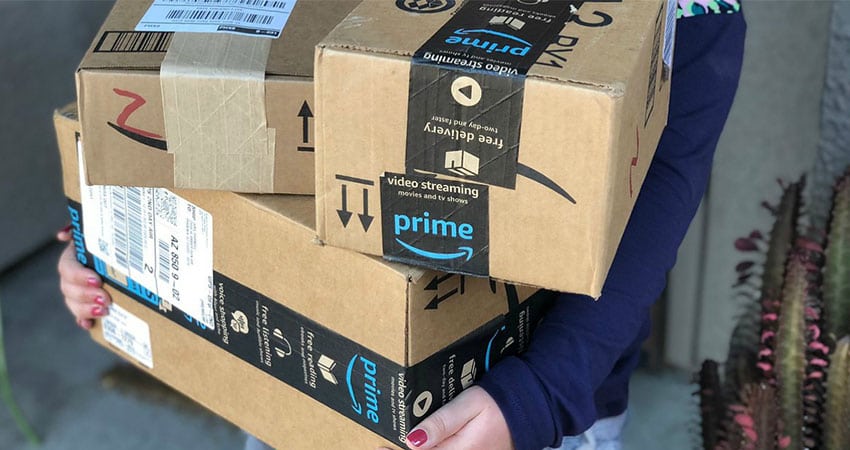As waves of legacy retailers close their doors or go bankrupt, countless others are scrambling to build a digital presence with the potential to compete against Amazon. However, as Amazon joined Apple as the second trillion dollar company in history, fighting the ecommerce giant’s unmatched economic influence over global consumer culture is no longer the right answer. In today’s fast paced ecommerce landscape, the most successful businesses will be those that can navigate the complexities of selling on the Amazon Marketplace and capitalize on its success to fuel their own growth.
In 2017, Amazon claimed 44 cents for every ecommerce dollar spent in the U.S. Its growth is nowhere near plateauing—by 2020 it is projected to account for 58% of U.S. ecommerce sales and total revenue for Amazon’s Marketplace of third party sellers is estimated to be $259 billion alone.
At first glance, these trends are undoubtedly intimidating for businesses eager to have a stake in the race, but the reality is that Amazon’s growth actually represents a massive opportunity for merchants. Ultimately, Amazon’s unprecedented success marks an essential paradigm shift in retail—one where merchants cannot simply rely on a basic ecommerce presence, but must take the next step to develop an intelligent, data-powered Amazon strategy.
Just as businesses were built on the back of the app economy following the introduction of the iPhone and evolution of the App Store, significant e-commerce businesses are already being built on top of the Amazon Marketplace. Estimates show that third-party sales drove 57% of Amazon’s gross merchandise volume in 2017, totaling more than $135 billion in revenue. Jeff Bezos noted in his recent letter to shareholders that, for the first time in the company’s history, the number of units sold globally by third-party sellers last year exceeded those sold by Amazon itself. These successful sellers are businesses both small and large—more than one million small businesses in the U.S. are selling on its Marketplace, and private equity investors are targeting high-velocity sellers in an effort to unlock new efficiencies and catalyze additional growth.
The Amazon Marketplace is a highly sophisticated, real-time trading floor similar to the financial markets. As competition remains fierce and Amazon’s pace of innovation shows no signs of slowing down, a sophistication gap has emerged between sellers and Amazon. From inventory management, storage, and fulfillment to branded storefronts, customer reviews, and advertising, marketplace sellers have countless variables to navigate and inform decisions across their businesses. Taken together, these factors present a complex web of information that impacts the unit economics and profitability of each business in unique and dynamically changing ways.
Sellers have yet to match the sophistication of Amazon in understanding these complexities, but there is a tremendous growth opportunity in front of those who do.
For example, choosing among Amazon’s three fulfilment options—Fulfillment by Amazon (FBA), Fulfillment by Merchant (FBM), or Seller Fulfilled Prime (SFP)—is an urgent decision sellers must navigate or risk losing money. While FBA sellers often have a higher share of the coveted Buy Box, they must be prepared to pay uncontrollable fulfillment and storage fees (which Amazon will assess monthly instead of semi-annually beginning this September). On the other hand, though FBM sellers have greater control over their storage and fulfillment costs, they don’t always reap the benefits of Amazon Prime (Prime customers are more than twice as likely to shop online daily) and must fight much harder for their Buy Box share. Meanwhile, over the last few months, an increasing number of Amazon sellers have decided to adopt SFP and offer Prime shipping in certain areas near their distribution centers, which saves on FBA fulfillment costs while still providing access to the benefits of Prime.
Sellers must also have a finger on the pulse of more acute complexities, including current data reporting discrepancies on how often FBA vs. SFP sellers are winning the Buy Box. With recent data showing that one-third of merchants are utilizing SFP in some form, many FBA sellers are losing money to SFP sellers without even realizing it.
Across the board, sellers are forced to weigh the impact these different choices will have on their business, and there’s no one-size-fits-all approach. The most successful sellers of today are those who are determined to match Amazon’s pace, while the most successful sellers of tomorrow will be the ones who are equipped to make integrated, holistic business decisions that balance all of these variables at once. In the high-frequency trading floor style of the Marketplace, the sellers with the best understanding of their data will win the day.
Amazon is already defining the trajectory for the future of e-commerce, so sellers must claim their share of the success before this window of opportunity closes. As more sellers not only engage on the Marketplace, but begin to crack the nuances of the Amazon code, they’ll be poised to realize the massive financial promise created by this e-commerce revolution.
Victor Rosenman is the CEO and founder of Feedvisor

